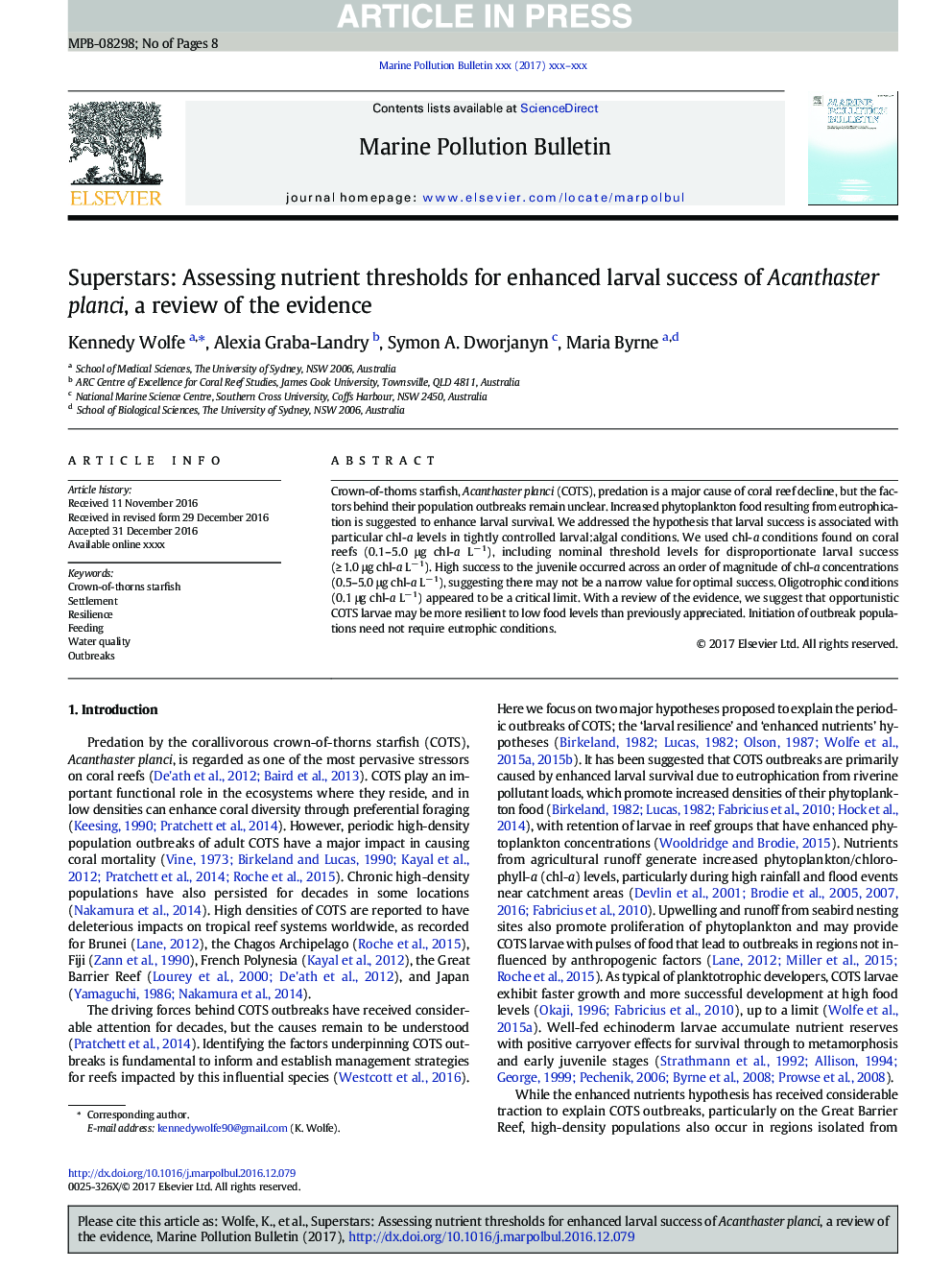| Article ID | Journal | Published Year | Pages | File Type |
|---|---|---|---|---|
| 5757610 | Marine Pollution Bulletin | 2017 | 8 Pages |
Abstract
Crown-of-thorns starfish, Acanthaster planci (COTS), predation is a major cause of coral reef decline, but the factors behind their population outbreaks remain unclear. Increased phytoplankton food resulting from eutrophication is suggested to enhance larval survival. We addressed the hypothesis that larval success is associated with particular chl-a levels in tightly controlled larval:algal conditions. We used chl-a conditions found on coral reefs (0.1-5.0 μg chl-a Lâ 1), including nominal threshold levels for disproportionate larval success (â¥Â 1.0 μg chl-a Lâ 1). High success to the juvenile occurred across an order of magnitude of chl-a concentrations (0.5-5.0 μg chl-a Lâ 1), suggesting there may not be a narrow value for optimal success. Oligotrophic conditions (0.1 μg chl-a Lâ 1) appeared to be a critical limit. With a review of the evidence, we suggest that opportunistic COTS larvae may be more resilient to low food levels than previously appreciated. Initiation of outbreak populations need not require eutrophic conditions.
Related Topics
Physical Sciences and Engineering
Earth and Planetary Sciences
Oceanography
Authors
Kennedy Wolfe, Alexia Graba-Landry, Symon A. Dworjanyn, Maria Byrne,
